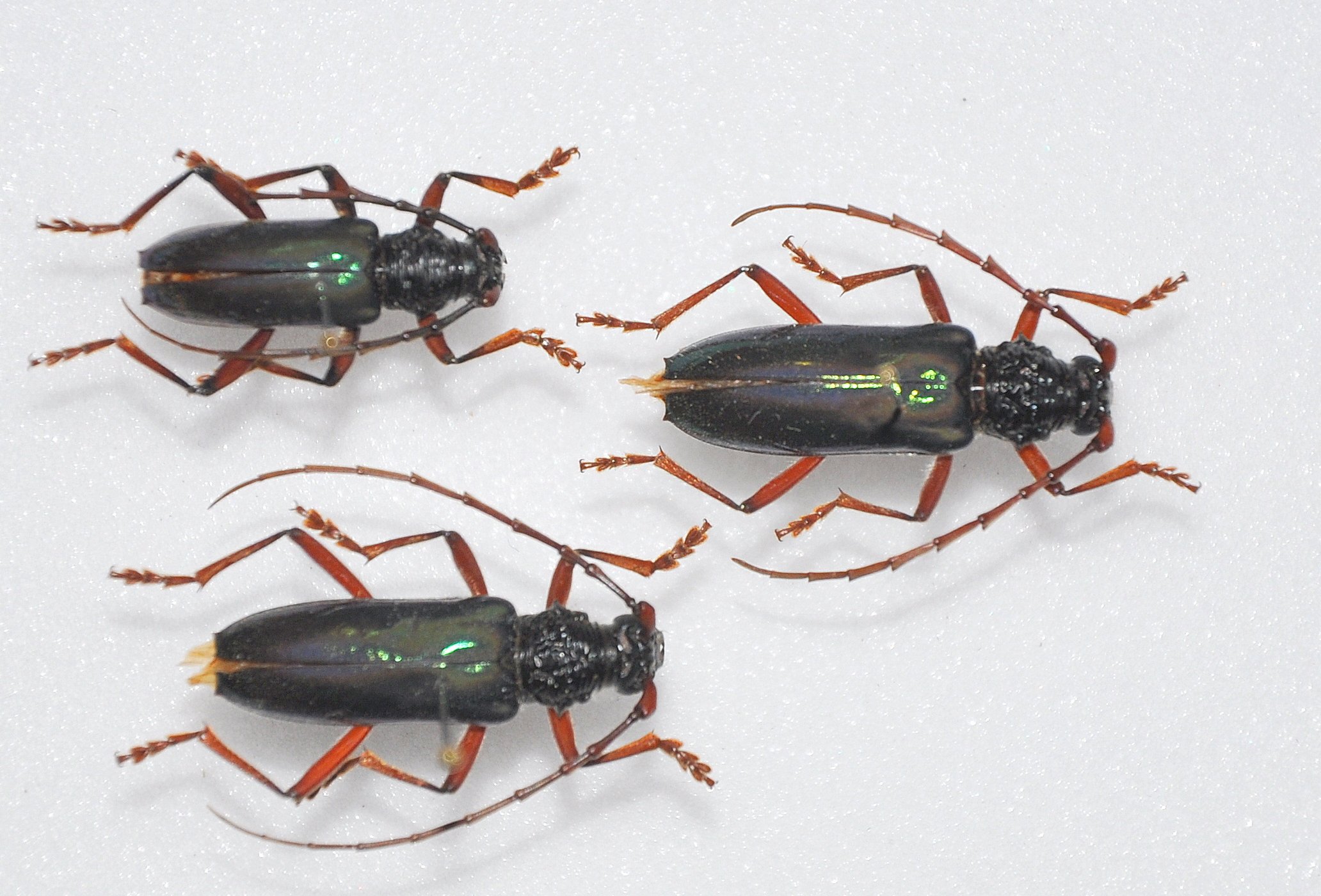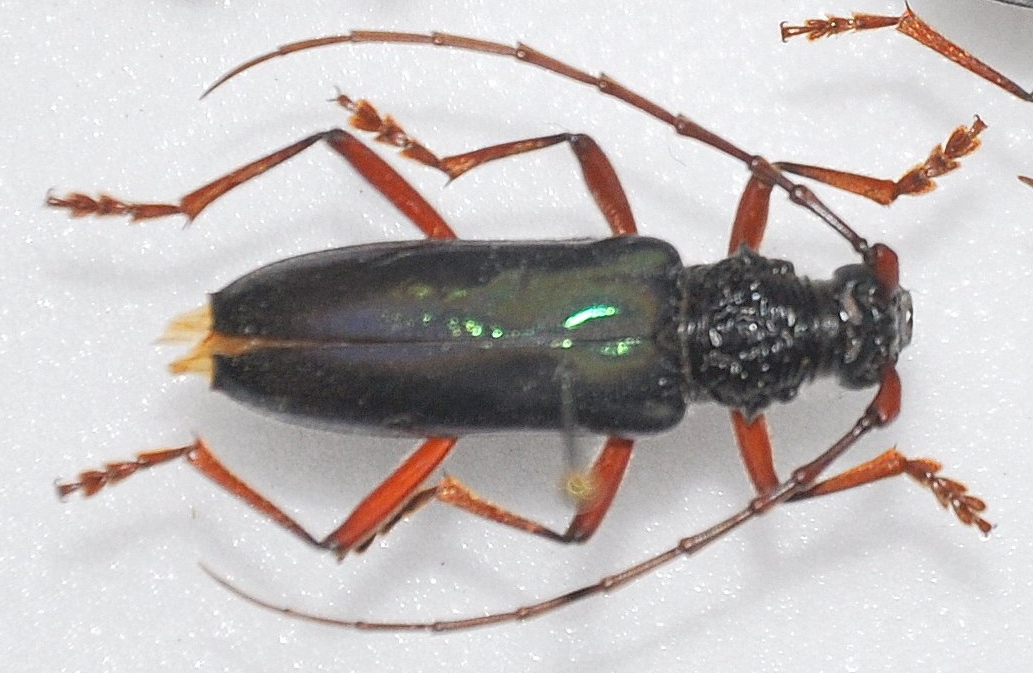| Author |
 Topic Topic  |
|
|
Pierre
Member Rosenbergia
   
Switzerland
1755 Posts |
 Posted - 28/02/2010 : 20:01:32 Posted - 28/02/2010 : 20:01:32



|

Also from Cameroon.
17 to 22 mm.
|
Edited by - Gerard on 30/01/2016 11:58:48 |
|
|
Francesco
Forum Admin
    
Luxembourg
9454 Posts |
 Posted - 04/03/2010 : 09:32:20 Posted - 04/03/2010 : 09:32:20




|

These three specimens belong to two different species of Neoplocaederus.
Could you confirm me that this one has an oblique furrow, which cut the transversal ridges, on each side of the pronotum? |
 |
|
|
Pierre
Member Rosenbergia
   
Switzerland
1755 Posts |
 Posted - 04/03/2010 : 17:47:02 Posted - 04/03/2010 : 17:47:02



|
Yes this furrow is present on each side.
By the way, the other two larger specimen also have this kind of furrow. The main difference is that their ridges on the disk of the pronotum are much more confused, not as regular and parallel than in the small specimen. |
 |
|
|
Francesco
Forum Admin
    
Luxembourg
9454 Posts |
 Posted - 04/03/2010 : 18:01:40 Posted - 04/03/2010 : 18:01:40




|
Well: such furrows allow distinguish these species from P. chloropterus and P. gabonicus.
It might be P. viridipennis or P. basalis according to the elytral puncturing: uniformly sparse on the whole surface (viridipennis) or evidently closely serrate on the basal third (basalis).
Unfortunately, the definition of the picture does not allow me to distinguish this difference. |
 |
|
|
Pierre
Member Rosenbergia
   
Switzerland
1755 Posts |
 Posted - 05/03/2010 : 16:05:34 Posted - 05/03/2010 : 16:05:34



|
The small specimen shows a punctuation very regular allover the elytra; it changes only along the suture, where it becomes finer and more superficial.
The two larger ones show stronger and more dense puncturing towards the basal third and especially the humeral areas.
If these observations fit with the descriptions you mention, we could have both species, viridipennis and basalis. |
 |
|
|
Francesco
Forum Admin
    
Luxembourg
9454 Posts |
 Posted - 05/03/2010 : 20:35:40 Posted - 05/03/2010 : 20:35:40




|
Perfect! The small species is a female of Neoplocaederus viridipennis (Hope, 1843).
The other two species (a pair) belong to another group, which includes cyanipennis, viridescens and opalinus (I have split the topic since it is very easy to mix up these names...)
Is the scape of this pair wrinkled, punctured or smooth? |
 |
|
|
Pierre
Member Rosenbergia
   
Switzerland
1755 Posts |
 Posted - 05/03/2010 : 21:42:59 Posted - 05/03/2010 : 21:42:59



|
| The scape is punctured all over. On its upper part, where it get its typical swelling, it shows distinct wrinkles. But only here; the rest of the scape is only punctured. |
 |
|
|
Francesco
Forum Admin
    
Luxembourg
9454 Posts |
 Posted - 06/03/2010 : 09:58:42 Posted - 06/03/2010 : 09:58:42




|

Perfect! This and the similar specimen should be Neoplocaederus cyanipennis (Thomson, 1860).
It differs from viridescens in the more fine pronotal wrinkles and the more intense green colour... a character that I could not manage to understand from the picture. |
 |
|
|
Pierre
Member Rosenbergia
   
Switzerland
1755 Posts |
 Posted - 06/03/2010 : 20:51:40 Posted - 06/03/2010 : 20:51:40



|
O.k. the natural colour does not come out on the photos, you are right. They are really green, not as blueish than the photo suggests.
Thank you for you help! |
 |
|
| |
 Topic Topic  |
|


